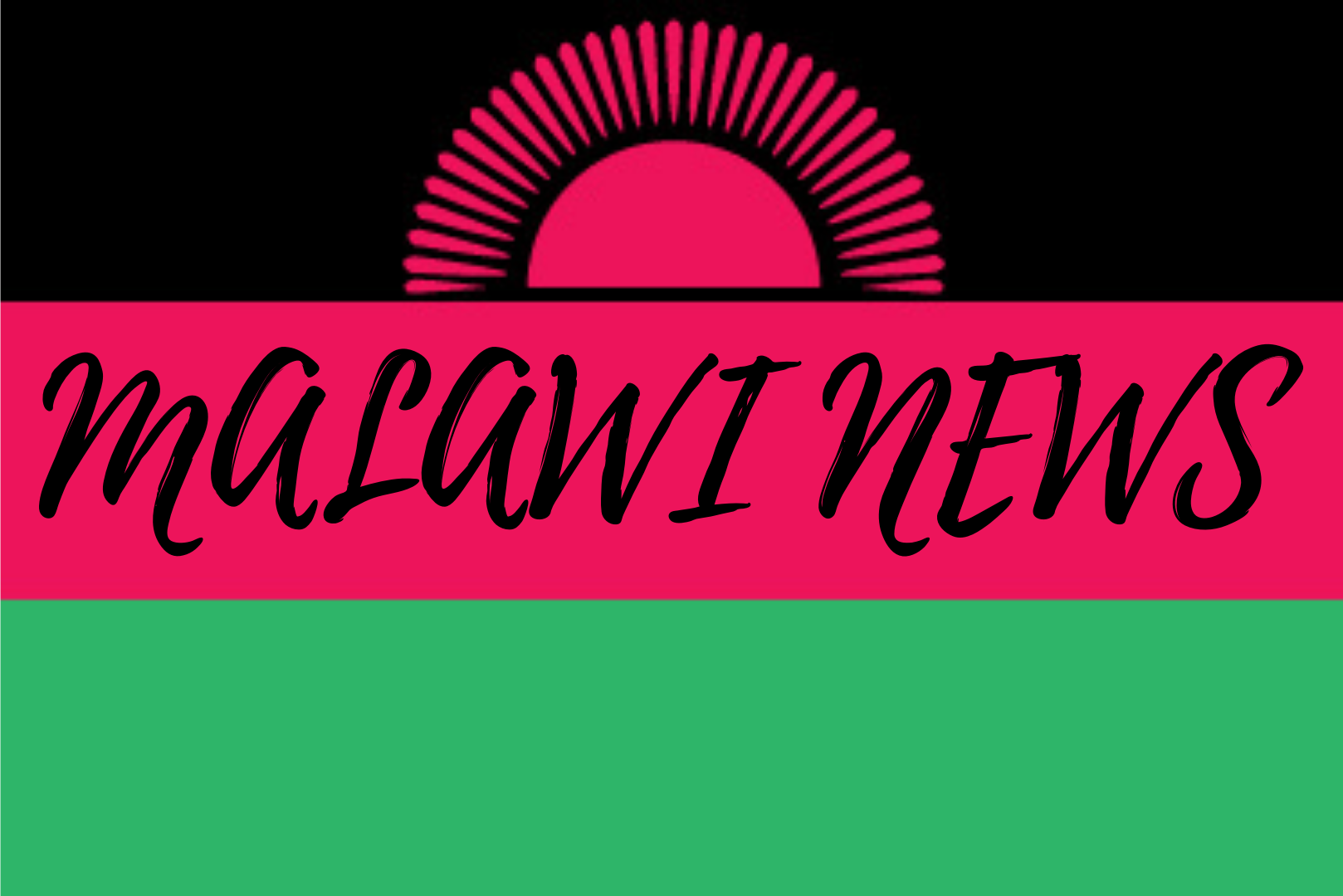アフリカの多くの国では、人々は属する民族によって異なる規範や信念を持っています。
つまり、ある民族の一員であれば、自動的にその集団の規範や信条に従うことになるのです。
これは、統一性を保つためであり、ある意味では文化の保存のためでもあります。
マラウイは、文化的な伝統と信念でよく知られているアフリカの国の一つです。
マラウイには様々な民族が存在し、それぞれ異なる規範や伝統を持っています。その中には、ロムウェ、トゥンブカ、チェワ、ンゴニ、ヤオといった民族がいます。
このブログでは、マラウイを訪れ、いくつかの民族とその伝統的な信仰について見ていきたいと思います。
まず、ロムウェ族から見ていきましょう。
ロムウェ族はマラウイ南部、チョロ、ムランジェ、チラヅル、パロンベの各県に住んでいます。彼らはチロムウェ語を話します。
ロームウェ族はモザンビークからマラウイに移住してきたと言われています。
ロムウェ族の文化は、踊り、歌、食べ物、結婚制度など、様々な面で知られています。
文化的な踊りでは、ロムウェ族はチョパ(Tchopa)で知られています。
これは、男女の両方が参加する伝統的なダンスです。
結婚式、首長就任式、入門式など様々な場面で使われ、また、領地を訪れた重要な人物を歓迎する儀式にも使われました。
昔は、雨が降らなかったり、降らなかったりしたときに、チョパ・ダンスがとても役に立ちました。
そのようなとき、人々は踊ったり歌ったりして、先祖に自分たちの悪い行いを許してもらい、作物や家畜のために雨を降らせてもらうようにお願いしたのです。
雨が降れば、神様が祈りに応えてくれたことがわかりますが、雨が降らないときは、また別の日に同じことをします。
このように、チョパ・ダンスが人々や祖先の間を取り持つ役割を担っていたのです。
しかし、現在ではこの活動は存在していません。
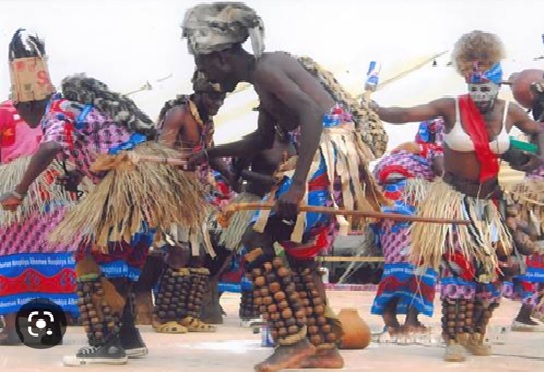
文化的な踊りに加えて、ロムウェの人たちは食べ物でも知られています。
実際、彼らは西洋の食べ物よりも地産の食べ物を好みます。
例えば、鳩豆(Nandolo)、牛豆(Kalongonda)、トブワ(Thobwa)などを食べます。
また、ロムウェの文化にはチカムウィニという独自の結婚制度があり、男性は妻の家に滞在し、女性が夫の家にいることはめったにないそうです。
そのため、コミュニティ内の土地を所有するのは女性であり、男性は放浪者であるため、結婚した先で耕作することになると考えられています。
トゥンブカの伝統には、他の民族と異なる側面もある。
トゥンブカはマラウイ北部、特にムジンバ、ルンピ、カロンガ、チティパ県で見られる。
彼らはチトゥンブカを母国語としています。
そのため、トゥンブカの文化は、踊りや歌、食べ物、結婚制度など、さまざまな側面で知られています。
このダンスは、誰かが病気になったときに、祖先の慈悲を求めるために踊られるもので、ヒーリングダンスと呼ばれています。
マラウイ北部では、ヴィンブザはとても重要な伝統舞踊なのです。
以下は、ヴィンブーザの踊りです。
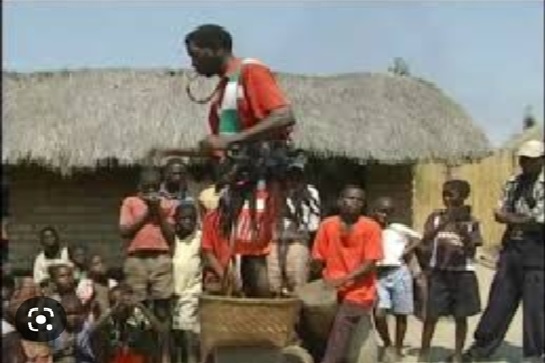
マラウイにはチェワ族という民族がいます。
実はこのグループは、ンチシ、デッザ、ドーワ、リロングウェ、カスング、ムチンジといった中部地方にある地区に存在しています。
しかし、ザンビアの一部にも存在しています。
チェワ族にも独自の信仰があり、他とは異なる信仰を持っています。その中には、伝統的な踊りや食べ物の種類もあります。正直なところ、チェワ族は最も文化を守る民族であり、ほとんどの文化的な踊りが行われている。
例えば、グレ・ワンクール、カングウィングウィ、マカンジャ、カマノなどである。
ロムウェとは異なり、これらの踊りはすべて「ジロンボ」と呼ばれる男性によって踊られます。これらの踊りは、年に一度の大きな儀式である「クランバ」をはじめ、様々な場面で披露されます。
この儀式では、各地に住むチェワ族が一堂に会し、年に一度のお祝いを行います。
マラウイかザンビアのどちらかで、リーダーのカロンガ・ガワウンディが住んでいる場所を選んで祝うのです。
そのため、すべての文化舞踊は、居住地(クダンブウェ)から式典が行われる場所へと移動します。
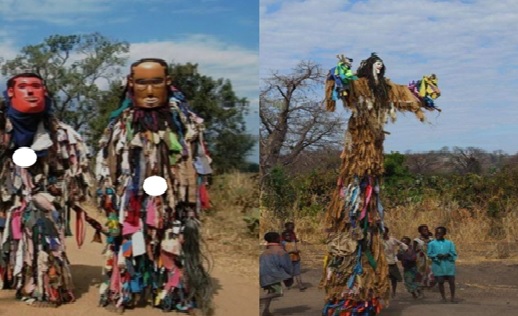
踊りのほかに、チェワ族は食べ物でも知られています。チェワ族の多くは、ンシマとカボチャの葉(nkhwani)を郷土料理として親しんでいます。
また、チェワ族ではネズミも食べ物として扱われます。
結婚する場合、チェワ族はロボラ婚姻制度を採用しており、男性は金銭または家畜の形で花嫁の対価を支払うことになっています。
このように、チェワ族は若いうちから様々な信仰に親しんでいます。
続けて、ンゴニ族という別のグループを見てみましょう。
この民族は、南アフリカのクワズル・ナタル出身と言われています。
ンゴニ族同士の意見の食い違いから争いが起こり、その結果、ンゴニ族の一部が南アフリカを離れ、ここマラウイでズワンゲンダバ(ズワンゲンダワ)の指導を受けるようになりました。
マラウイに到着した彼らは、ジェレ・ンゴニ(北部地域)とマセコ・ンゴニ(中部地域)の2つのグループに分かれました。
2つのグループに分かれたとはいえ、伝統的な踊りや食べ物など、同じ信仰を持つことは変わらない。 伝統的な踊りでは、ンゴニがンゴマ/インゴマを披露する。ンゴマは主に男性によって行われ、酋長就任式や入隊式などの様々な場面で披露されるほか、戦争を解決する前や勝利の証として披露されることもあります。
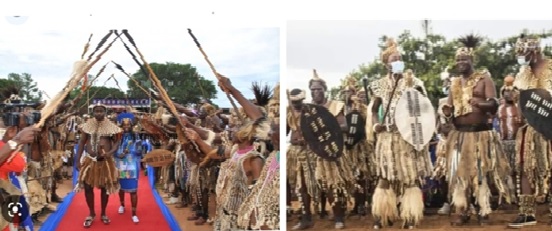
彼らは通常、動物の皮をかぶった頭装備を身につけ、手には弓矢を持っています。狩猟はンゴニ民族の習慣である。
そのため、ンゴニ族は肉、ビール、ンゴマ、女性(女遊び)の4本柱でよく知られています。
年に一度、ンゴニ族は「ウンテソ・ワ・アンゴニ」と呼ばれるある機会に集まり、マラウィの各地や国外からンゴニ族が集まり、共通の意見を述べ合います。
ヤオ族はマラウイに存在するもう一つの民族である。マラウイ東部のマンゴチ、マチンガ、バラカ、ゾンバの一部地域に分布している。
彼らの祖先はモザンビーク出身で、マンゴチを経てマラウイに移住し、前述の各県に定住しています。
ヤオ族は、アラブ人と交易して以来、マラウイに交易活動を導入した一族であることから、優れた交易人であることが知られています。
その理由は、モザンビークでは作物に適さない山がちな土地であったこと、そして干ばつであったことである。
そのため、ヤオ族は交易のために湖岸に沿って広がり、交易に適した場所を探す放浪者であり、このような理由から、他の人々がンコタコタに定住していることが判明しています。
交易とは別に、ヤオ族はマラウイにイスラム教が伝来するのに貢献しました。
これは、彼らがアラブ人とつながり、交易の過程で彼らの宗教を広めたからです。
ヤオ族には独自の文化的な踊りがあります。しかし、よく知られているのはマンガンジェというダンスで、男性も女性も踊ります。
この踊りは、ジャンド(男性)とンゾンド(女性)の首長就任式や入門式など、さまざまな場面で披露されています。
一方、ヤオ族の食べ物は、他の民族とは少し違います。
彼らの食べ物は「コンドウォレ」(キャッサバ粉のンシマ)のようなもので、儀式がある場合は他のどんな食べ物よりも米を好み、ほとんどの場合、儀式の時にはンシマは存在しない。
実はヤオ族は、文化と宗教が混在しているという意味で、特殊な民族なのです。
ヤオ族の95%近くはイスラム教徒である。

このブログではマラウイに住むロムウェ、トゥンブカ、チェワ、ンゴニ、ヤオなどの部族の文化的伝統についてお伝えしました。
In many African countries, people do have different norms and beliefs according to the ethnic group that one belongs to.
So, if you are a member of one ethnic group, you are automatically abided by the norms and beliefs of that particular group.
This is done for the sake of uniformity and at some point for cultural preservation.
Malawi is one of the African countries that is well known on cultural traditions and beliefs.
And there are different ethnic groups that have different norms and traditions some of those groups are Lhomwe, Tumbuka, Chewa, Ngoni and Yao.
So, this blog, will take us to Malawi where we are going to look at some of the ethnic groups and their traditional beliefs.
Let’s start by looking at the Lhomwe tribe.
Lhomwe people are found in southern part of Malawi, within the districts of Thyolo, Mulanje, Chiladzulu as well as Phalombe. They Used to speak chilhomwe.
It is believed that the Lhomwe tribe was originated from Mozambique, where they migrated to Malawi.
Lhomwe cultural tribe has been known by various aspects such as dances, songs, foods, marriage systems among others.
In cultural dances, the Lhomwe tribe has been known by Tchopa.
This is the type of traditional dances that involves both men and women.
It is useful in various occasions such as in wedding ceremonies, chief installation ceremonies, initiation ceremonies, and also it was used as a welcoming function to a very important person who has just come to visit the territory.
In the past years, Tchopa dance was very useful when there is shortage or no rainfall.
So in that situation, people used to dance and sing so that they beg their ancestors to forgive their wrong deeds, and give them rain for their crops and animals.
When the rain came, they know that gods have answered their prayers, but when there is no rain, they set another day for the same occasion up until they have answered.
So Tchopa dance was used as a mediator among people and ancestors.
Though nowadays this activity does not exist.

On top of cultural dances, Lhomwe people are also known for their food.
In fact, they like local foods than western foods.
For example, they eat pigeon peas (Nandolo), Cow peas (Kalongonda), Thobwa among others.
In addition to that, the Lhomwe culture has got its own marriage system known as Chikamwini, whereby a man is supposed to stay at a wife’s home, and it’s rarely to find a woman at the husband’s home.
So, they believe that women are the ones to own the land in the community, whereby men are wanderers, so that they going to cultivate wherever they married. In Tumbuka tradition, they have also aspects that specify them from other ethnic groups.
Tumbukas are found in the northern part of Malawi specifically in Mzimba, Rumphi, Karonga and Chitipa districts.
They speak Chitumbuka as their mother language.
So Tumbuka culture has been known by various aspects such as dances, songs, foods marriage systems among others.
Their common dance is Vimbuza the healing dance, this is called the healing dance in a sense that, whenever someone is sick, Vimbuza is performed to ask for the healing mercies from the ancestors.
So Vimbuza is a very important traditional dance in the northern region of Malawi.
Below is an illustration of the Vimbuza dance.

Not only that, but also there is Chewa ethnic in Malawi.
Actually, this group is found in the districts within the central region such as Ntchisi, Dedza, Dowa, Lilongwe, Kasungu and Mchinji.
But also, it exists in some parts of Zambia.
Chewa as well, has its own beliefs which specify their beliefs from others. Some of them are traditional dances and their type of food. To be honest, Chewa is the most cultural preserving ethnic in which most cultural dances are performed.
Some of the dances are Gule wa mkulu, Kang’wing’wi, Makanja, Kamano and others.
Unlike lhomwe, all these dances are performed by men which are known as “zilombo”. These dances are performed on various occasions such as Kulamba, which is a big ceremony which takes place once a year.
At this ceremony all Chewa people from various locations come together to have their annual cerebration.
They choose where to celebrate either in Malawi or in Zambia where their leader Kalonga Gawaundi reside.
So, all the cultural dances move from their residing places (kudambwe) to where the ceremony is taking place.

Apart from local dances, Chewa is known for their type of food. Most of the Chewa are familiar with nsima and pumpkin leaves (nkhwani) as their local food.
Mice is also taken as their food by the Chewa tribe.
In case of marriage, Chewa use lobola system of marriage, where a man supposed to pay bride price whether in form of money or cattle.
All aforementioned beliefs, Chewa people try to familiarize themselves while they are young. To continue with, let’s see another group known as the Ngoni.
This ethnic is said to from Kwazulu Natal in south Africa.
Due to disagreement among Ngoni, there was a fight which led some of them to left south Africa to come here in Malawi under the leadership of Zwangendaba (Zwangendawa).
Upon reaching here in Malawi, they divided into two groups, the Jere Ngoni (Northern region) and the Maseko Ngoni (central region).
Though they divided into two groups, they still share the same beliefs such as traditional dances and food.
On traditional dances, Ngoni performs Ngoma/Ingoma. Ngoma is mostly performed by males in different occasions such as chief installation, initiation ceremonies, they also perform it before settling war and as a sign of victory.

They usually wear animal skin’s head gears and also bow and arrow in their hands. Hunting is a habit in the Ngoni ethnic group.
So, the Ngoni’s are well known for their four pillars namely meat, beer, Ngoma and ladies (womanizing).
Once in a year, Ngoni people gather at a certain occasion known as “unthetho wa angoni,” whereby all Ngonis from different parts of Malawi and outside the country are gathered to share their common views.
Yao is another ethnic group that exist in Malawi. This group is found in the eastern region of Malawi in the districts of Mangochi, Machinga, Balaka and in some parts of Zomba.
Their ancestors were from Mozambique, where they migrated to Malawi through Mangochi and settled in various aforementioned districts.
Yao people known to be great traders just because there are one to introduce trading activities in Malawi since they traded with Arabs.
There are reasons that made them cling to trade rather than farming or any other activities, these are mountainous land that was not suitable for crops in Mozambique, and also droughts.
So due to the reason of trade, the Yaos were wanderers in a sense that they spread along the lake shore in searching for better place for trading, with this reason others are found to be settled in Nkhotakota.
Apart from trade, the Yao has contributed to the coming in of Islam in Malawi.
This is because they connected with Arabs whereby in the process of trade, they spread their religion.
Yao as well has its own cultural dances. But the well-known dance is manganje, which is danced by both males and females.
This dance is performed in various occasions such as in chief installation and initiation ceremonies both Jando (for males) and Nzondo (for females).
On other hand, the Yao’s type of food is Abit different from other ethnic groups.
Their food is like “kondowore”(nsima of cassava flour), in a case there is a ceremony, they prefer rice to any other food, and in most cases nsima does not exist during ceremonies.
In fact, Yao is a special ethnic group in a sense that they mixed up the culture and religion.
Almost 95% of the Yaos are Muslims.

To sum up, this text was discussing about cultural traditions among some tribes within Malawi such as Lhomwe, Tumbuka, Chewa, Ngoni as well as Yao.
Mmaiko ambiri Muno mu Africa anthu Ali ndi makhalidwe komanso zikhulupiliro zosiyanasiyana motengera NDI mtundu omwe anabadwira. Izi zikusinyeza kuti ngati Uli m’modzi mwa mtundu winawake, umayenera kusatira chikhalidwe Ndi zikhulupiliro zomwe anthu amasatira kumeneko. Izi zimachitika kuti pasakhale kusiya maganizo komanso kungosunga chabe Mmiyambo ya makolo. Malawi NDI limodzi mwa maiko a mu Africa omwe amaziwika Ndi kusunga mitambo komanso zikhalidwe. Ndipo kuli mitundu yosiyanasiyana yomwenso Ili ndi miyambo komanso zikhalidwe zosiyanasiyana. Ina mwa mitundu imeneyi ndi monga; Lhomwe, Tumbuka, Chewa Ndi ena otero. Tsopano nkhaniyi, ititengera Ku Malawi komwe tiwone mitundu Ndi zikhalidwe komanso miyambo yawo.
Tiyeni tiyambe ndikudzukuta mtundu wa chi Lhomwe. Lhomwe Ndi mtundu wa anthu omwe umapezeka Ku chigawo Cha kum’mwera kwa Malawi, Mmaboma a Thyolo, Chiladzulu, Mulanje komanso Phalombe. Chiyankhulo chawo NDI chilhomwe. Kafukufuku amaonetsa kuti mtundu wa chilhomwe unachokera m’dziko la Mozambique pomwe adasamukira Muno M’malawi. Mtundu wa chilhomwe umadziwika ndi zichitochito zosiyanasiyana monga magule, nyimbo, zakudya ngakhalenso njira zamaukwati. Kumbali ya magule, alhomwe amaziwika Ndi Gule wa Tchopa, yemwe amavinidwa ndi abambo ngakhalenso amayi omwe. Guleyu ndi ofunika muzochitika zosiyanasiyana monga pa mwambo wa ukwati, mwambo olonga ufumu, mwambo wa chinamwari ngakhalenso kulandira alendo omwe Ali ofunika kwambiri omwe abwera kuzacheza. Kalekale, Tchopa amavinidwa ngati kuli chilala, munthawi imeneyi, anthu am Ina komanso kuimba ngati njira imodzi yopempha milungu yawo kuti iwakhululukire zolakwa zawo nkuwabweretsera mvura. Ngati mvura yagwa, amaziwa kuti milungu yayankha mapemphero awo, koma ngati Sinagwe, amakhalanso ndi mwambo wina kufikira milungu itawayankha mapemphero awo. Choncho Tchopa anali ngati nkhawa pakati wa pakati pa milungu Ndi anthu. Ngakhale kuti masiku ano izi sizichitika.

Alhomwe amaziwikanso Ndi zakudya zosiyanasiyana. Iwo amakomda zakudya za makolo kusiyana Ndi za makono. Mwachitsanzo amakonda kudya nandolo, kalongonda ngakhalenso Thobwa ndi Zina.
Mongonjezerapo alhomwe Ali NDI njira yawo yomwe amapezera maukwati yotchedwa chikamwini. Iyi NDI njira yomwe Mwamuna amayenera kukakhala kwa mkazi wake. Ndipo kawirikawiri nzosowa kuchilhomwe mkazi kukakhala kwao kwa Mwamuna, popeza Iwo amakhulupilira kuti akazi ndiwo eni nkhaka, pamene amuna ndi oyendayenda amakalima komwe akakwatire.
Nako Ku chitumbuka Ali Ndi zichitochito zawo zomwe zimawasiyanisa Iwo ndi mitundu ina. Mtundu wa chitumbuka umapezeka kumpoto kwa Malawi Mmaboma monga Mzimba, Rumphi, karonga Ndi Chitipa. Iwo amayankhula chitumbuka ngati chiyankhulo chawo Chapaphata. Choncho nawo mtundu wa chitumbuka umaziwikanso Ndi zichitochito zawo monga magule, Nyimbo, zakudya, njira zopezera maukwati Ndi Zina. Kuchitumbuka Gule yemwe Ndoziwika bwino Ndi Vimbuza. Guleyu amamutchula kuti Gule ocheza chifukwa choti pamene munthu wadwalika anthu amabwera nkudzavina guleyu nkupempha milungu kuti imuchize odwalayo. Choncho Gule wa Vimbuza adali ofunika kwambiri kuchitumbuka, ngakhale kuti Pano mapemphero Ndi mauthenga a zaumoyo anapangitsa kuti anthu asinthe kaganizidwe. Chithunzi chili pamusipa chikuonetsa momwe anthu amavinira Gule wa Vimbuza.

Sizokhazo ai, Ku Malawi kulinso mtundu uja umatchedwa kuti Chewa. Mtundu umenewu umapezeka mchigawo Cha pakati chadziko la Malawi M’maboma a Ntchisi, Dedza, Lilongwe, kasungu and Mchinji. Komanso mtundu umenewu umapezekanso mzigawo Zina za dziko la Zambia. Nawo achewa Ali Ndi zikhulupiliro zawo zomwe zimasiyanitsa pakati pa Iwo ndi mitundu ina, zomwe Zina mwa izo Ndi magule Ndi zakudya. Kunena mosabisa, mtundu wa achewa Ndi okhawo omwe umasunga kwambiri chikhalidwe Muno M’malawi, Ndi omwenso Uli Ndi magule ochuluka monga Gule wamkulu, kang’wing’wi, makanja, Kamano Ndi ena otero. Mosiyaniranapo Ndi mitundu ina ngati wa chilhomwe, magule a chichewa amavinidwa kwambiri Ndi amuna okhaokha omwe amatchedwa kuti “Zilombo.” Magule amenewa amavinidwa pa mwambo osiyanasiyana monga mwambo wa kulamba we Ndi mwambo waukulu omwe umachitika pa Chaka kamodzi. Pa mwambo umenewu, achewa onse ochokera Madera osiyanasiyana amabwera pamodzi nkupanga chikondwerero chawo Cha pachaka. Chaka chilichonse amasankha Malo omwe akapangire chikondwerero chawo Kaya Ndi Ku Malawi Kuno kapena Ku Zambia komwe mkulu wa achewa otchedwa Karonga Gawaundi amakhala. Munthawi imeneyi, magule onse amachoka kuthengo ( kudambwe) komwe amabisala nkukakumana pamodzi.

Kupatula magule, mtundu wa achewa wakhala ukuziwika Ndi zakudya zomwe Iwo amakonda. Achewa ambiri amakonda nsima ya ndiwo nkhwani otendera, komanso mbewa.
Pankhani ya ukwati, achewa amagwirisa ntchito njira ya lobola yomwe Mwamuna amayenera kupereka Ndalama kapena ng’ombe ngati akufuna Kutenga mkazi. Miyambo yonse yakambidwayi, mchewa aliyense amayenera kumaiziwa ndikuizolowera adakali wachichepere. Popitiliza, tiyeni tioneko mtundu wina otchedwa a Ngoni. Kafukufuku amaonetsa kuti mtundu umenewu unachokera m’dziko la South Africa kuchigawo chotchedwa Kwazulu Natal. Chifukwa Cha mikangano komanso kumenyana, zinachititsa kuti angoni ena athawire Kuno Ku Malawi motsogozedwa Ndi Zwangendaba (Zwangendawa). Atafika Ku Malawi Kuno, adagawika pawiri, angoni akwa Jere omwe amapezeka Ku mpoto, Ndi angoni a kwa Maseko omwe amapezeka mchigawo Cha pakati. Ngakhale izi zili chomwechi, Iwo amachitira limodzi zinthu zawo komaanso zikhulupiliro zawo nzofanana monga magule komanso zakudya. Angoni amavina Gule otchedwa Ngoma/Ingoma yemwe kawirikawiri amavinidwa kwambiri Ndi amuna Pa mwambo osiyanasiyana monga mwambo wa kulonga ufumu, chinamwari komanso akamapita kunkhondo, komanso magulewa amavinidwa ngati chikondwerero Cha kupambama kwao pa nkhondo.

Angoni amakonda kuvala zikopa za nyama, nduwira kumanja atanyamula ma uta. Nkhani yosaka nyama angoni ndiye kudya kwawo, ndipo Iwo amaziwika Ndi ngodya zawo zinayi zomwe Ndi nyama, mowa, Ngoma komanso akazi. Pachaka angoni amakhala NDI mwambo waukulu omwe amautchula kuti “unthetho wa angoni” omwe angoni onse kuchokera mzigawo zosiyanasiyana M’malawi Muno ngakhalenso kunja amakumana pamodzi nkukumbusana Zina mwa zikhulupiliro zawo.
Yao Ndi mtundu wina umapezeka Ku Malawi. Mtundu umenewu umapezeka Ku mvuma kwa Malawi M’maboma a Mangochi, Machinga, Balaka Ndi Madera ena a boma la Zomba. Makolo awo a mtundu umenewu anachoka m’dziko la Mozambique pomwe adasamukira Muno M’malawi kudzera Ku mangochi nkukhazikika M’maboma omwe atchulidwawo. Ayao amadzika kwambiri Ndi malonda popezanso Ndi omwe anayambitsa malonda M’malawi Muno chifukwa amalumikizana kwambiri Ndi Aluya. Pali kafukufuku wina yemwe amaonetsa zifukwa zomwe ayao amakakamira malonda kusiyana Ndi ulimi kapena zochita Zina. Izi Ndi monga nthaka ya miyala yomwe imapezeka Ku Mozambique yomwe ndiyovutirapo pankhani ya ulimi, komanso chilala, izi zinapangisa ayao kuti akhale okonda zamalonda kwambiri poganiza kuti nzochita zokhazo zomwe angamapezereko zosowa zawo. Tsono chifukwa cha malonda, ayao anasanduka anthu osakhazikika pamalo popeza ankangiyendayenda posankha Malo abwino opangira malonda awo makamaka mphepete mwa nyanja ya Malawi. Ndipo pa chifukwa chimenechi, ayao ena amapezeka M’boma la Nkhotakota.
Kupatula nkhani za malonda, ayao Ndi omwenso anachitisa kuti chipembezi Cha chi silamu chipezeke Kuno Ku Malawi. Izi zili chomwechi chifukwa ankalumikizana kwambiri Ndi Aluya, omwe pochita za malonda ankafalisa za Chipembezo Cha Ku dziko lakwao. Pachifukwa chimenechi, mtundu wa chiyao Ndi mtundu wa paderadera chifukwa Iwo chikhalidwe Ndi Chipembezo zimayendera pamodzi. Kafukufuku amaonetsa kuti pafupifupi 95% ya ayao Ndi a Chipembezo Cha chisilamu.

Ayao amaziwikanso Ndi Gule yemwe amatchedwa manganje yemwe amavinidwa ndi abambo ngakhalenso amayi mu zachitika zosiyanasiyana monga mwambo wa kulonga ufumu, Ndi chinamwari otchedwa “Jando”(anyamata) komanso “Nzondo”(atsikana).
Mwazina, mtundu wa zakudya zomwe ayao amakonda umasiyaniranapo Ndi mitundu ina. Iwo amakonda nsima ya kondowore. Pakakhala zochitika, Iwo amakonda kudya mpunga kusiyana Ndi zakudya zina ngati nsima, munthawi Zina nsima sipezeka nkomwe. Ponalizitsa, nkhaniyi unakamva zambiri za miyambo ya zikhalidwe zosiyanasiyana mwa mitundu ina yomwe imapezeka Ku Malawi. Choncho nkhaniyi yakhuza kwambiri mitundu ngati ya chilhomwe, chitumbuka, Chichewa, chingoni ngakhalenso chiyao.
ブロガー:パトリック・マーク・ナンガウェ
Blogger: Patrick Mark Nangawe
私はパトリック・マーク・ナンガウェ、22歳独身で、一人っ子として生まれました。
現在はマラウイ大学(UMIMA)語学学科の学生です。
My name is Patrick Mark Nangawe, aged 22 and single. Am the first and last born in our family. Am doing my degree in Bachelor of Education Language at University of Malawi (UNIMA)
Contact details: +265 880 521 316
WhatsApp: +265 880 569 000
Email: patricknangawe93@gmail.com
District of Origin: Thyolo
Residential District: Mangochi
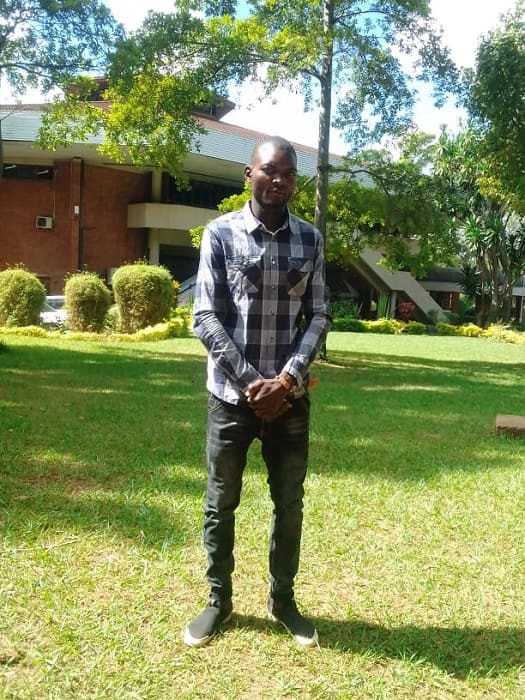
 Moni Malawi
Moni Malawi 
